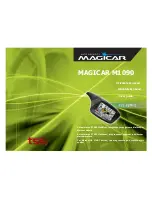
Agency Alarm Placement
Recommendations
Invensys Controls Americas recommends complete coverage
protection achieved by installing a smoke alarm in every room of
your home.
For your information, the National Fire Protection Association’s
Standard 72, reads as follows:
11.5.1* Required Detection.
11.5.1.1* Where required by applicable laws, codes, or standards for
a specific type of occupancy, approved single- and multiple-station
smoke alarms shall be installed as follows:
(1) *In all sleeping rooms and guest rooms
(2) *Outside of each separate dwelling unit sleeping area, within
6.4 m (21 ft) of any door to a sleeping room, the distance
measured along a path of travel
(3) On every level of a dwelling unit, including basements
(4) On every level of a residential board and care occupancy
(small facility), including basement and excluding crawl spaces
and unfinished attics
(5) *In the living area(s) of a guest suite
(6) In the living area(s) of a residential board and care occupancy
(small facility)
A.11.8.3 One of the most critical factors of any fire alarm system
is the location of the fire detecting devices. This annex is not a
technical study. It is an attempt to provide some fundamentals on
alarm or detector location. For simplicity, only those types of alarms
or detectors recognized by Chapter 11 (e.g., smoke and heat alarms
or detectors) are discussed. In addition, special problems requiring
engineering judgment, such as locations in attics and in rooms with
high ceiling, are not covered.
Smoke Alarms or Smoke Detector Mounting – Dead Air Space.
The smoke from a fire generally rises to the ceiling, spreads out
across the ceiling surface, and begins to bank down from the ceiling.
The corner where the ceiling and wall meet is an air space into which
the smoke could have difficulty penetrating. In most fires, this dead
air space measures about 0.1 m (4 in.) along the ceiling from the
corner and about 0.1 m (4 in.) down the wall as shown in Figure
A.11.8.3 Detectors should not be placed in this dead air space.
Smoke and heat detectors should be installed in those loca-
tions recommended by the manufacturer’s published instructions,
except in those cases where the space above the ceiling is open
to the outside and little or no insulation is present over the ceiling.
Such cases result in the ceiling being excessively cold in the winter
or excessively hot in the summer. Where the ceiling is significantly
different in temperature from the air space below, smoke and heat
have difficulty reaching the ceiling and a detector that is located on
that ceiling. In this situation, placement of the detector on a side-
wall, with the top 0.1 m to 0.3 m (4 in. to 12 in.) from the ceiling, is
recommended.
Figure A.11.8.3 Example of Proper Mounting for Detectors
The situation described previously
for uninsulated or poorly insulated
ceilings can also exist, to a lesser extent,
in the case of outside walls. The recom-
mendation is to place the smoke alarm or
smoke detector on a sidewall. However,
where the sidewall is an exterior wall with
little or no insulation, an interior wall
should be selected. It should be recog-
nized that the condition of inadequately insulated ceilings and walls
can exist in multifamily housing (apartments), single-family housing,
and mobile homes.
In those dwelling units employing radiant heating in the ceiling,
the wall location is the recommended location. Radiant heating in
the ceiling can create a hot-air, boundary layer along the ceiling
surface, which can seriously restrict the movement of smoke and
heat to a ceiling-mounted detector.
This equipment should be installed in accordance with the National
Fire Protection Association’s Standard 72, NFPA, Batterymarch Park,
Quincy, MA 02269.
THIS STANDARD MEANS YOU SHOULD INSTALL AND USE
A SMOKE ALARM IN EVERY ROOM AND AREA OF YOUR
HOUSEHOLD OR BUILDING FOR BEST PROTECTION.
4 IN
(0.1m )
4 IN
(0.1m )
MINIMUM
12 IN
(0.3 m )
MAXIMUM
CEILING
SIDE
WALL
ACCEPTABLE HERE
NEVER HERE
TOP OF ALARM
ACCEPTABLE HERE
2


























